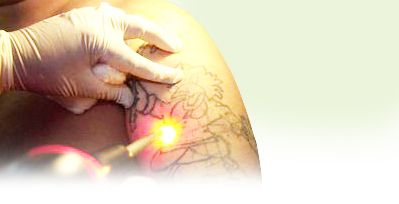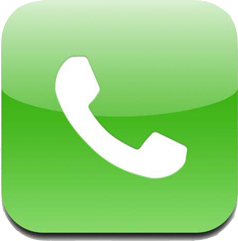Laser Tattoo Removal – Q&A

Redeem Clinic
Common Questions of laser tattoo removal
1. Why are tattoos so hard to remove?
2. How does the laser tattoo removal process work to remove my tattoo?
3. Can you treat all the colours within my tattoo?
4. Why is it difficult to treat some colours over others ?
5. How do I know if certain colours in my tattoo will be resistant to the procedure?
6. How many treatments will it take to remove my tattoo?
7. How far apart should my treatments be taken?
8. Will the laser tattoo removal procedure hurt?
9. How will my skin react after each treatment?
10. What aftercare is needed to look after the treatment area?
11. I am worried about this type of tattoo removal leaving any scars?
12. Are there any other side affects?
13. How much will laser tattoo removal cost?
1. Why are tattoos so hard to remove?
There are two main layers of skin, the Epidermis that acts as the top, waterproof, protective layer to the body and the Dermis that includes nerve endings, hair follicles and sweat glands etc. A tattoo is a containment of ink trapped within the underlying dermis layer of the skin. The tattoo process uses a needle to place large ink pigments into the dermis layer of the skin. During the healing process after a tattoo procedure the ink particles are encapsulated by collagen fibers and held in place within the Dermis. Normally the human bodies natural healing process would remove any foreign objects in the dermis, the tattoo ink however is too large a particle to be removed and is held permanently in place.
Go to Top
2. How does the laser tattoo removal process work to remove my tattoo?
Laser tattoo removal uses a device called a Q-switch that creates very short pulses of high- energy laser energy every 10 nanoseconds (1 nanosecond=1000,000,000 of a second) or a Picosecond (1 Picosecond=1000,000,000,000). The tattoo pigment absorbs these very short, intense pulses of light energy extremely quickly resulting in its break up into smaller micro-particles. The selectiveness of the procedure means that only the tattoo pigment absorbs the laser energy meaning the surrounding skin area is not heated up and damage is rarely incurred in the adjoining tissue. Once the larger tattoo pigment particles are broken down into smaller micro-particles the body is able to absorb and discard them naturally using its immune system. Results can be seen over a series of treatments as the tattoo gradually fades.
Go to Top
3. Can you treat all the colours within my tattoo?
It is possible to break down all colours to some degree. Black, dark blue and green ink pigments can all be removed very efficiently by the two wavelengths of light emitted by the laser machine – visible infrared light and visible green light. The visible infrared light targets black and dark blue pigments whilst the visible green light targets red pigments. It is possible to treat other colours although some bright pigments such as yellows prove more difficult to remove. For Green pigments we would recommend the use of our ruby laser or Picosecond laser machine. For total and efficient removal of any remaining colours (such as whites and yellows), our Rejuvi non-laser tattoo removal procedure should be used.
Go to Top
4. Why is it difficult to treat some colours over others?
The different wavelengths of light emitted from the laser are absorbed in varying degrees by different ink particles. Certain ink pigments react well to the wavelengths of light the laser machine produces whilst others not so much. A mixed colour such as a purple for example will contain red and blue pigments, there is a requirement therefore to use two laser types to remove purples, one that will remove the red elements and one that will remove the blue elements. Producing a single laser that can deal with all colour pigments completely would be simply is not possible as yellows and specifically white pigments can not be removed by laser (although Yellows can be lightened). The reasons for this are that some wavelengths of light cannot penetrate deep enough into the skin whilst others can penetrate too far and damage the skin. The laser types capable of removing tattoo ink pigments are 532mn, 1064mn, 694mn and 755nm. Some coloured inks contain heavy metal particles that can react poorly with the laser. These heavy metals carbonise and turn the pigment black making the altered ink very difficult to remove. If we feel laser tattoo removal is not suitable for your tattoo we will instead recommend our Rejuvi non-laser tattoo removal technique.
Go to Top
5. How do I know if certain colours in my tattoo will be resistant to the procedure?
Normally the obvious colouration of the tattoo will make it clear whether or not the treatment will be a full successful. In cases where this is unapparent a small test patch will be treated to determine the likelihood of a successful procedure. Our Rejuvi non-laser tattoo removal may be a better option for more colour rich fluorescent tattoos, however we only tend to move to Rejuvi tattoo removal if some stubborn colours can not be removed with our ND Yag , Picosecond or Ruby laser.
Go to Top
6. How many treatments will it take to remove my tattoo?
There is no definitive answer for this question as all treatments are different. There are many factors to consider such as the size and colour of the tattoo, the type of ink used, the density of the pigment and how your body reacts to the treatment. During each session, some but not all of the tattoo pigment particles are successfully fragmented. The body will absorb the small particles over several weeks. Remaining large particles of tattoo pigment are then targeted at following sessions, causing further lightening. Amateur tattoos can take from as little as 3 treatments to remove whereas professional tattoos can take up to 10 or more treatments to remove *.
Go to Top
7. How far apart should my treatments be taken?
Between treatments the body needs time to break down the ink pigments and absorb them and this can take some time. A minimum of 6-8 weeks is recommended to allow your body to fully recover between treatments (preferably 8 weeks). Treating more frequently then every 6 weeks can increase the risk of unfavourable side effects and not necessarily increase the rate of ink absorption (our recommendation is therefore to leave for 8 weeks if possible). There are many other factors however that determine the length between treatments such as tattoo location and size. Each tattoo is assessed differently but this will be discussed fully beforehand with one of our laser tattoo removal technicians.
Go to Top
8. Will the laser tattoo removal procedure hurt?
Customer care is extremely important at Redeem Clinic and we will do out utmost to make sure you as a patient feel comfortable during the treatment. Numbing anaesthetic cream is offered before each treatment to make the patient feel as comfortable as possible during the procedure however some people prefer to go without. When anaesthetic is not chosen by the client, ice/chill packs are applied prior to treatment to numb the skin. The treatment has been noted as being mildly uncomfortable but mostly all people tolerate the procedure well. The sensation has been likened to an elastic band snapping quickly across your skin or a hot pinprick. The sensation is often likened to be a little more intense than the original tattoo procedure. The procedure is accompanied by a ‘clicking’ noise as the tattoo pigment particles shatter.
Go to Top
9. How will my skin react after each treatment?
Immediately after the treatment the skin will appear white but this should subside within a few minutes. Afterwards a feeling similar to light sunburn can often be felt accompanied by reddening of the skin. This feeling normally disappears within a few hours but some redness may persist for up to 48 hours. Some patients experience the development of bruises, blisters and crusts forming over the treatment area between 8-72 hours after the procedure. These are completely normal and show the body is healing the area properly, they usually last for 1-4 weeks. Our trained laser technicians will instructs you on specific, detailed aftercare procedures after every treatment to ensure quick and efficient recovery. Healing of the skin should be complete within 4 weeks. Initially the tattoo will not look as if it has changed much however it should start to fade within 2-8 weeks of the first treatment as the body naturally disperses the broken down particles.
Go to Top
10. What aftercare is needed to look after the treatment area?
The treatment area should be kept clean and dry for 48hrs after the treatment. It can be washed gently with soap and water when required after 2 days. Any blisters and scabs show that the body is functioning properly to remove the tattoo pigment and should be left alone to heal. Do not pick the scab or scrape the skin as this can cause scarring. Antibacterial ointment can be applied to the wound to help the healing process. Detailed instructions will be provided after your treatment outlining how to properly care for your wound.
Go to Top
11. I am worried about this type of tattoo removal leaving any scars?
At Redeem we take the upmost care when performing our procedures. The high level of skill of our laser tattoo removal technicians mean scarring is minimal if at all. Scarring is only likely if improper after care is practiced, all blisters and scabs should be left to heal naturally to remove the risk of scarring. Do not pick or scratch the treatment area after the procedure. In very few cases, patients suffering with rare scarring disorders such as keloids may have a slight increase in the forming of scar tissue.
Go to Top
12. Are there any other side affects?
Dependent on skin type some precaution should be taken before treatment commences. Patients with darker skin should be aware that some of the natural skin pigment might be removed as well as the tattoo pigment (called skin de-pigmentation/Hypopigmentation/Hyperpigmentation). This in the very vast majority of cases is not permanent and the skin should return to its natural state within a few months. Harsh exposure to the sun or sun-beds before treatment is ill advised as the active melanin in the skin can react with the laser to cause skin damage. A period of 4 weeks out of the sun is recommended before the start of a treatment. At Redeem we will make sure a full consultation is taken before the procedure to outline any possible side effects that may be associated with your skin shade and type. Different laser types can have vary effects of the clients melanin and for this reason Fitzpatrick tests (test to determine, density and reactive nature of melanin) are offered to clients to determine which laser types are safe to use.
Go to Top
13. How much will laser tattoo removal cost?
Laser tattoo removal costs start from as low as £15. Our average client treatment usually fall between £25-£50 with costs generally increasing subject to the type of laser chosen for the treatment. When you come for your consultation we will measure the size of your tattoo, carry out a skin assessment, advise which laser we believe would be best for removing your tattoo and let you know how much each treatment will cost. Factors such as the size of the tattoo, pigment density and colour will affect the cost of individual patients treatments.
Go to Top
14. More questions?
Redeem are happy to answer any further questions you have that are not covered on our Q&A page. Simply give us a call or email using our contact page. If you would like to know more about laser removal for microblading then please see our sister site here
Go to Top
*Results may vary from person to person












